The introduction of a new EV model usually represents a revolutionary moment for a car brand. The car is typically a departure from the norm, not just in fuel source but design and overall character. They’re usually a break from tradition and/or a beacon pointing in a whole new direction.
Then there’s the new 2024 Rolls-Royce Spectre. There’s nothing about it that feels revolutionary, which largely speaks to what came before. We’re talking about a Rolls-Royce here. They were always whisper-quiet with a V12 engine judiciously doling out gobs of effortless torque without fanfare. You know, like electric motors do. Or rather, as electric motors can. Forget about sledgehammer-to-the-chest launches in the Spectre – Rolls-Royce specifically tuned the throttle to elegantly roll into its power, much as it did, partly by necessity, with a V12. You can imagine the torque curve looking more like an airplane taking off than a rocket. Once underway, speed builds rapidly and passes are made effortlessly. Again, like a V12.
The Spectre also looks like a V12 could still be lurking beneath the vast bonnet even though it was 100% EV from the get-go. There was no effort to reimagine Rolls-Royce for the electric era with cab-forward proportions or “Blade Runner” styling cues. The front is sleeker to be sure, for the purposes of design and aerodynamics, with even the Spirit of Ecstasy hood ornament being nipped and tucked to eliminate turbulence that occurred behind the most recent rendition. The overall drag coefficient of 0.25 is certainly commendable for something that retains a blunt front end complete with the must-have “Pantheon” grille that ensures no one will mistake this for anything other than a Rolls-Royce. That it’s softly illuminated by 22 LEDs ensures identification at all hours.
Once inside, you sit lower in the Spectre than past models, including the similarly two-door Wraith. The resulting view through the gun-slit windshield over the long, imposing hood and raised dashboard is reminiscent of pre-war, ultra-luxury cars from Rolls-Royce, Duesenberg and others. When I mentioned that observation to Rolls-Royce CEO Torsten Müller-Ötvös, his eyes lit up as if to say, “Eureka!” That was exactly what Rolls was going for – it had nothing to do with the powertrain.
Evoking those cars also speaks to the overall goal of choosing the Spectre’s distinctive body style in the first place.
“We could have done an SUV or a sedan easily, but this is such a big moment for the brand, we needed to do something emotional,” said Müller-Ötvös. “What is more emotional than a coupe?”
Plenty of emotion can be generated inside, especially when one liberally partakes in the endless customization options. The fabulous Rolls-Royce Starliner, with its fiber optic lights gleaming through the leather headliner, can now migrate to the doors and rear interior quarters, complete with shooting-star-like perforations. This will impress people. A similar swirl of illuminated stars can then surround “SPECTRE” on the passenger-side dash. Rolls was also kind/smart enough to showcase a rainbow of possible interior color combinations with its assembled collection of cars, which were also painted in a striking showcase of hues shown above. From the classic and stealthy end of the spectrum, to flamboyant and downright gaudy, it was all on display. Our test car in Imperial Jade (pictured at the top of the page) sported a metallic black hood, roof and trunk, with an interior combination of black leather accented by yellow seat trim, stitching and fluffy carpets. The urge to take my shoes off was strong.
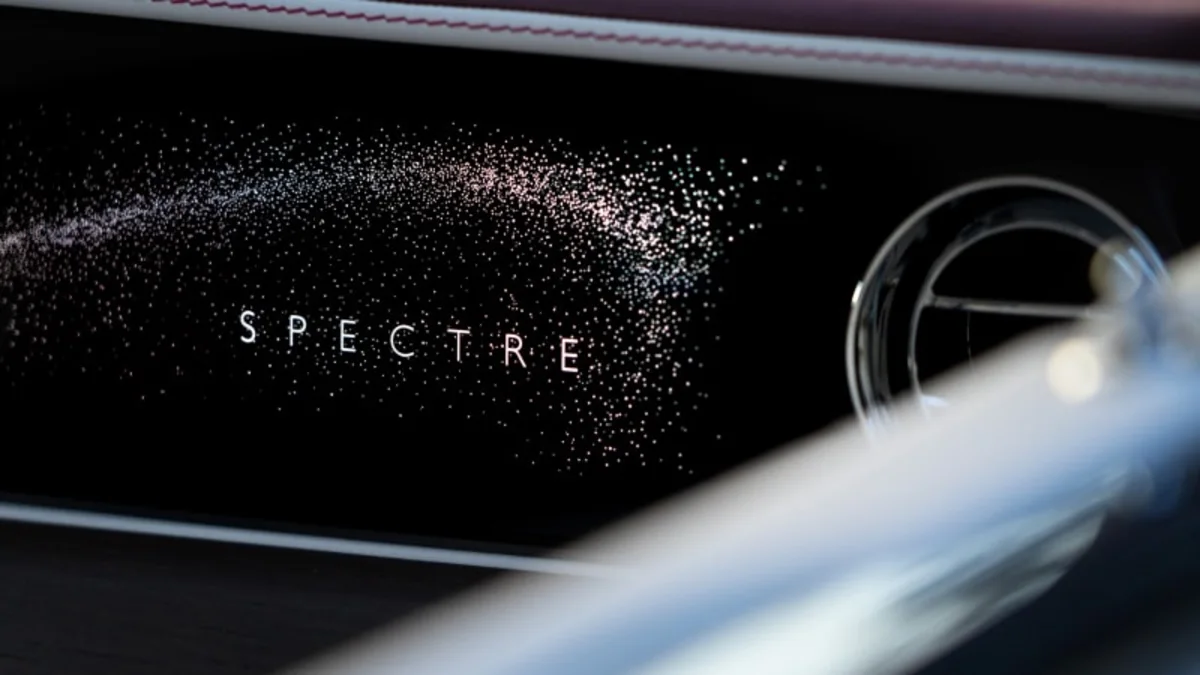
In the back seat, your choice of seat leather starts on the quarter panels and wraps contiguously onto the seat. It’s the type of detail you see in concept cars or renderings all the time to create a “lounge-like” atmosphere, but Rolls-Royce actually pulled it off. A budget of $Git-‘er-done probably helps. I must say that it was actually noticeable and beneficial for the purposes of comfort; indeed, the Spectre’s back seat is a perfectly pleasant place to spend time. I sat in the back for two half-hour jaunts with plenty of leg- and headroom, though I must admit that a 6-foot-plus driver would’ve made it a bit tight.
Getting in and out of the back seat is reasonably dignified, too. Pop open the power-operated coach doors, slide the front seats forward with the chunky chrome metal latch, and elegantly emerge. This is also a proper hardtop coupe without a B pillar, remember, so lowering the rear window makes for an even more graceful exit. Those doors, by the way, can close by way of buttons on the center console or simply putting your foot on the brake pedal.
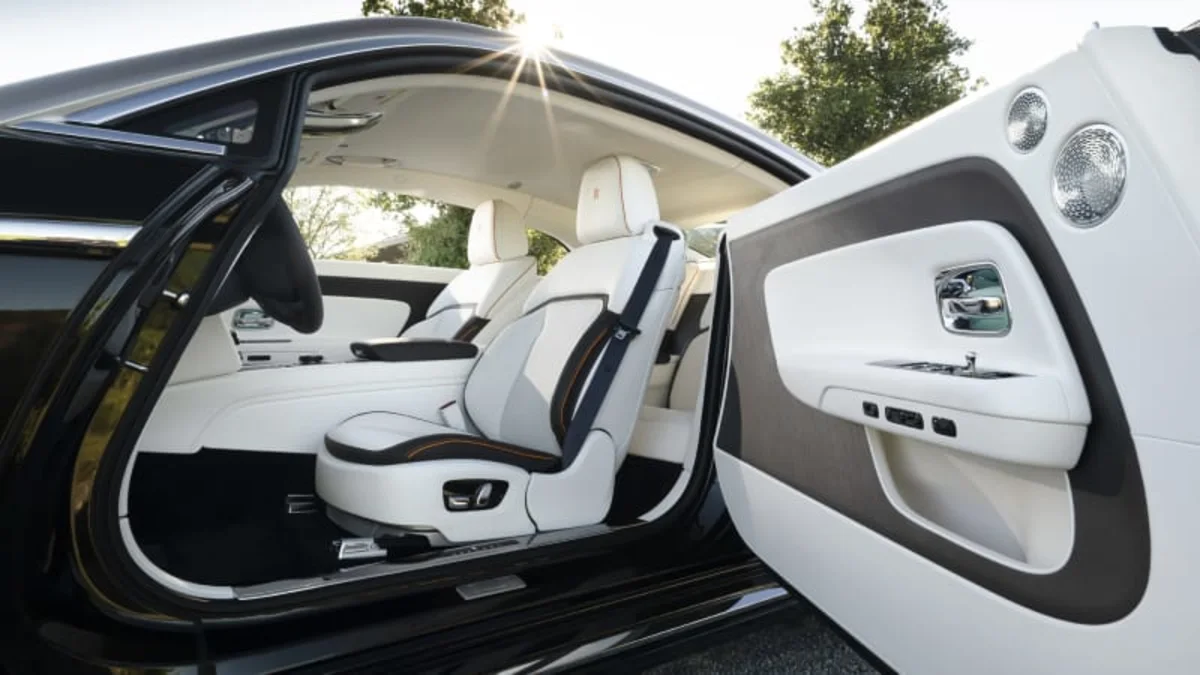
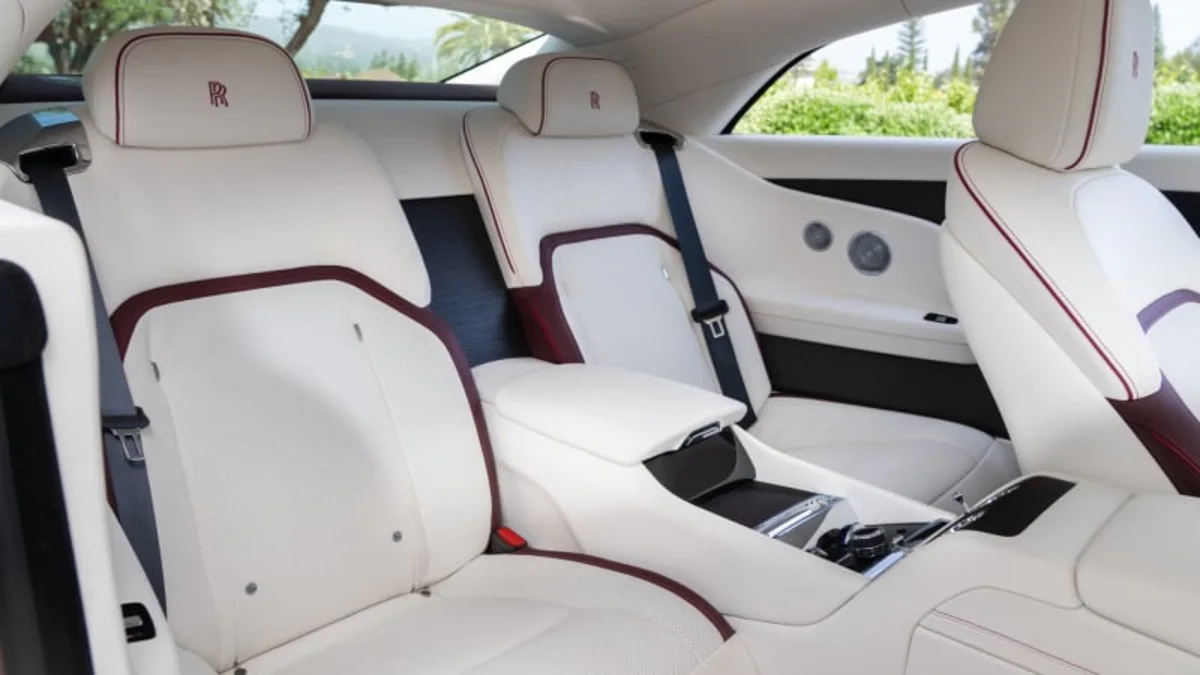
Not that you actually have to put your foot on the brake pedal much once underway. A button on the column shifter that is at once old- and new-school engages “B mode” or, effectively, one-pedal driving. Some journalists in attendance wished for even more off-throttle braking power, but they also admitted to typically driving more aggressively than the norm. I found it to be spot-on, both for my typical use of one-pedal driving and the car’s character. Stops are smooth and easy to modulate using the throttle alone. This, again, was by design. Rolls said “B mode” was tuned to emulate the so-called “champagne stop” that chauffeurs perfect so their bosses in the back won’t spill their champagne. You can’t make this stuff up.
The rest of the driving experience is typical Rolls-Royce, but let’s just assume you’re not among the 60% of would-be Spectre buyers who already own a Rolls. The car wafts down the road, which is typically considered a negative descriptor in car reviews, but in this case, it is literally what Rolls was going for. The word even appeared in the product presentation as a stated goal. The two-stage adaptive dampers, air suspension and automatically decoupling anti-roll bars(!) prevent nautical rolling, bobbing, pitching and diving, but there remains a delicate float to the proceedings that encourages smooth inputs from the surprisingly thick (for a Rolls-Royce) three-spoke steering wheel. The ratio is quite slow at lower speeds with ample boost, which seems absolutely perfect for a vast, old-school luxury car. At higher speeds, though, the steering is reassuringly taut on center, with a smooth, buttery turn-in that imparts some idea of what the 23-inch front wheels are doing. I managed to stumble upon a rather fine mountain road during a detour from the suggested drive route, but had to repeatedly remind myself to simmer back down to a “stately” pace. And no, there are no adjustable drive settings. Apart from B mode, the Spectre drives like a Spectre. There’s something authentic about that. Refreshing too, reviewing cars these days often feels like we’re reviewing three at the same time.
Of course, the Spectre costs as much as three cars. Wait, that’s not nearly enough. The price starts at $420,000, but that’s just the tip of the customization iceberg. If you get out of there south of a half-mil, bravo. In case you’re wondering, and I definitely needed to look this up, a Phantom these days starts at $475,000, a Cullinan at $348,500 and a Ghost at $340,500. The final Wraith, which had the same body style as the Spectre, started at $311,329 back in 2021. What do any of these comparisons say and how much is chalked up to the electric powertrain? I have no idea. To paraphrase, if you have to ask, you can’t afford it.
Speaking of the electric powertrain, though, you’ll note that I really haven’t spoken about it. Normally, new EV introductions are rife with newfangled facts and figures you have no point of reference for. Geek stuff. Rolls-Royce doesn’t exactly shine a light on those specs, which is entirely in keeping for a car company that used to state its cars’ horsepower as “sufficient.” Well, both power and EV range are indeed sufficient. Thankfully, though, Rolls-Royce is actually willing to share some info these days.
Every Spectre has a front and rear electric motor, and is, therefore, all-wheel-drive. Together, the motors produce 584 horsepower and 664 pound-feet of torque, which speaks to the “sufficient” element. Rolls isn’t particularly concerned about topping the Lucids of the world. The 0-60 time is 4.4 seconds, so, ditto. EPA-estimated range for the 102-kilowatt-hour battery stands at 260 miles, but the car showed 280 miles when we got in with an almost-full battery and stayed in that range throughout the drive despite us making no attempt to drive economically. It should also be noted that the Ghost’s range is only 305 miles on good-old-fashioned gasoline, and I guarantee that you have to drive economically to do that.
The maximum DC fast-charging speed is 195 kW, which can take the battery from 10-80% in 34 minutes. That’s nice, but for Rolls customers, being able to charge from home is one of the primary benefits of going electric – no more waiting around a scuzzy gas station (or dispatching an employee to a scuzzy gas station). Rolls-Royce also noted that the battery is “made using cobalt and lithium from strictly controlled sources in Australia, Morocco and Argentina: The battery cells are produced using 100% green electricity.”
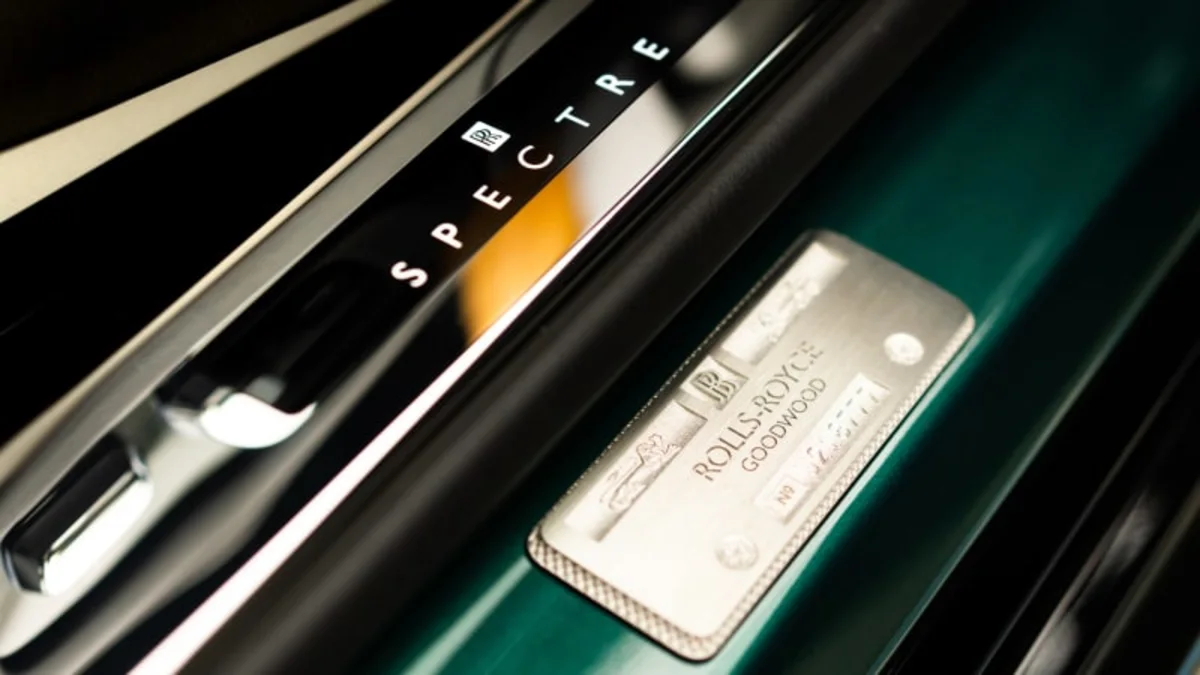
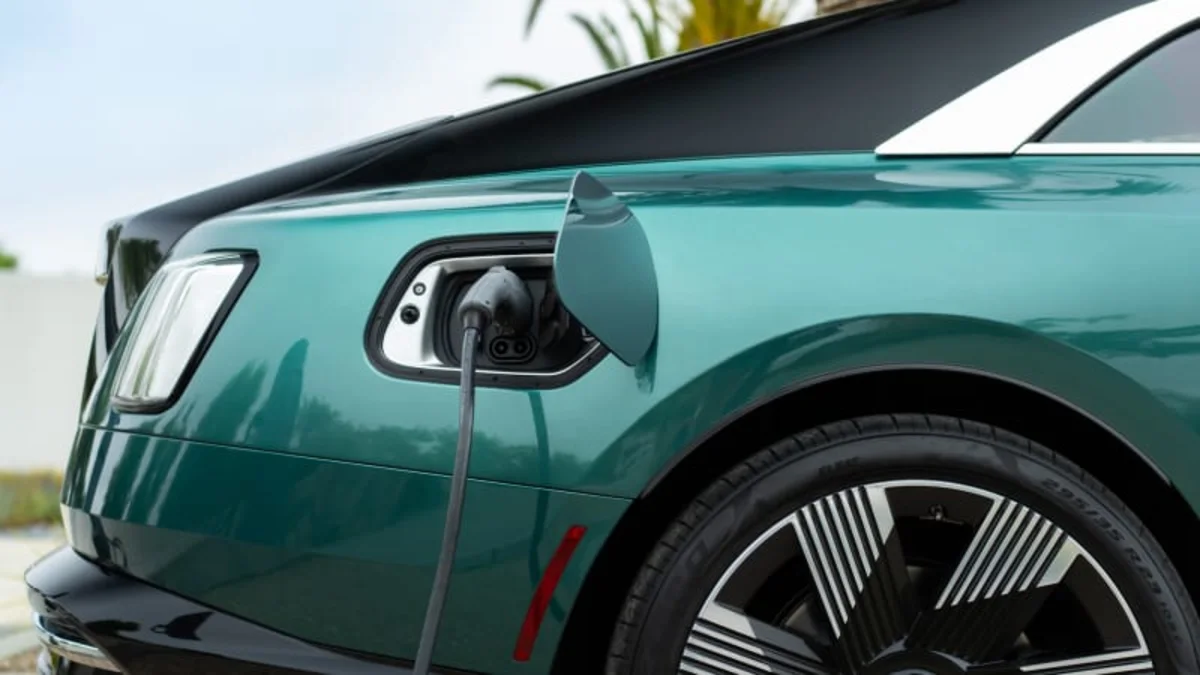
All of the above is obviously a massive change for Rolls-Royce, a “big moment” for the brand, as Müller-Ötvös said. Despite this, going electric just seems like a natural step given the brand’s established driving characteristics and a price point where an EV premium effectively makes no difference. When I mentioned to Director of Engineering Dr. Mihiar Ayoubi that his creation really didn’t seem that revolutionary and that it “just” drove like a Rolls-Royce, he too gave me the “Eureka!” treatment. “That’s exactly what we were going for.”
But don’t just take our word for it.
“The electric car is perfectly noiseless and clean. There is no smell or vibration. They should become very useful when fixed charging stations can be arranged,” said the Charles Rolls … three years before he met Sir Henry Royce, who, by the way, was actually an electrical engineer. Turns out the Spectre was prophesized from the beginning.
Read the full article here


